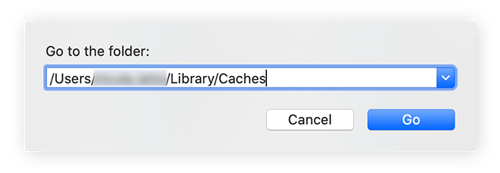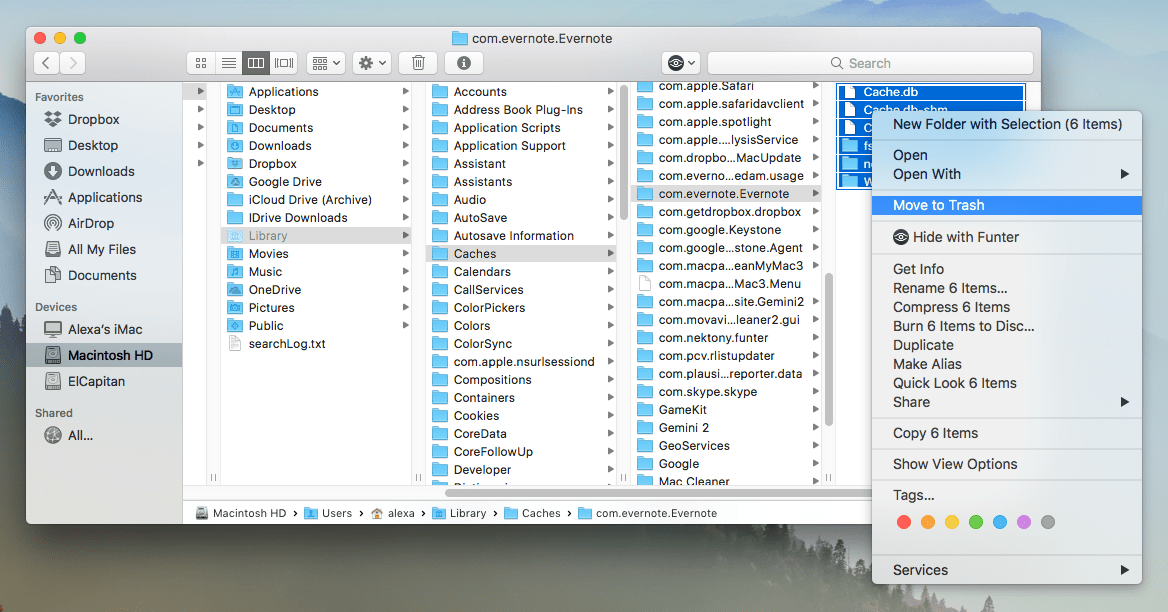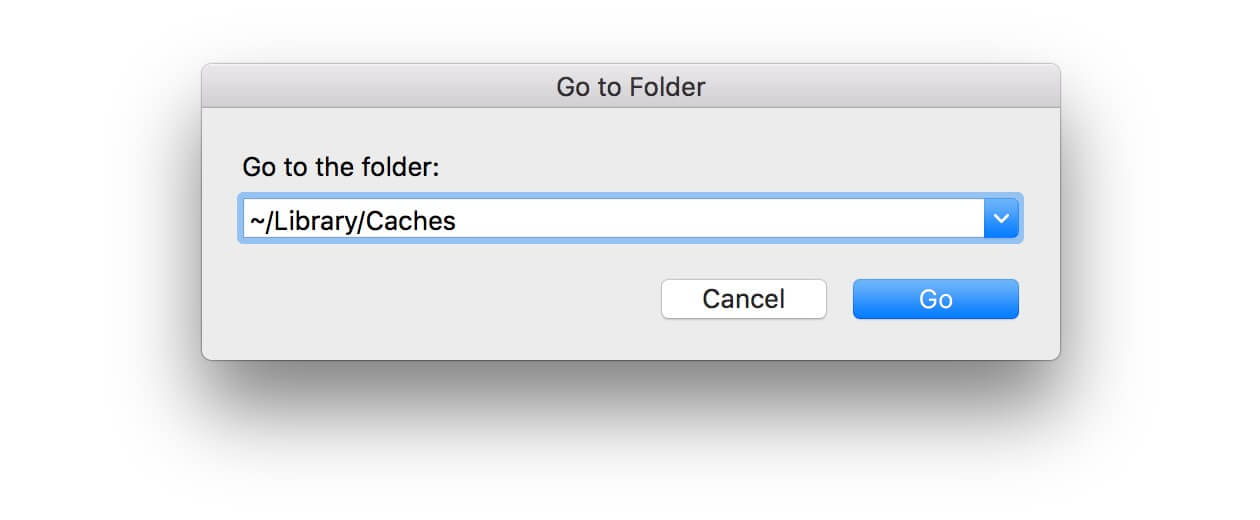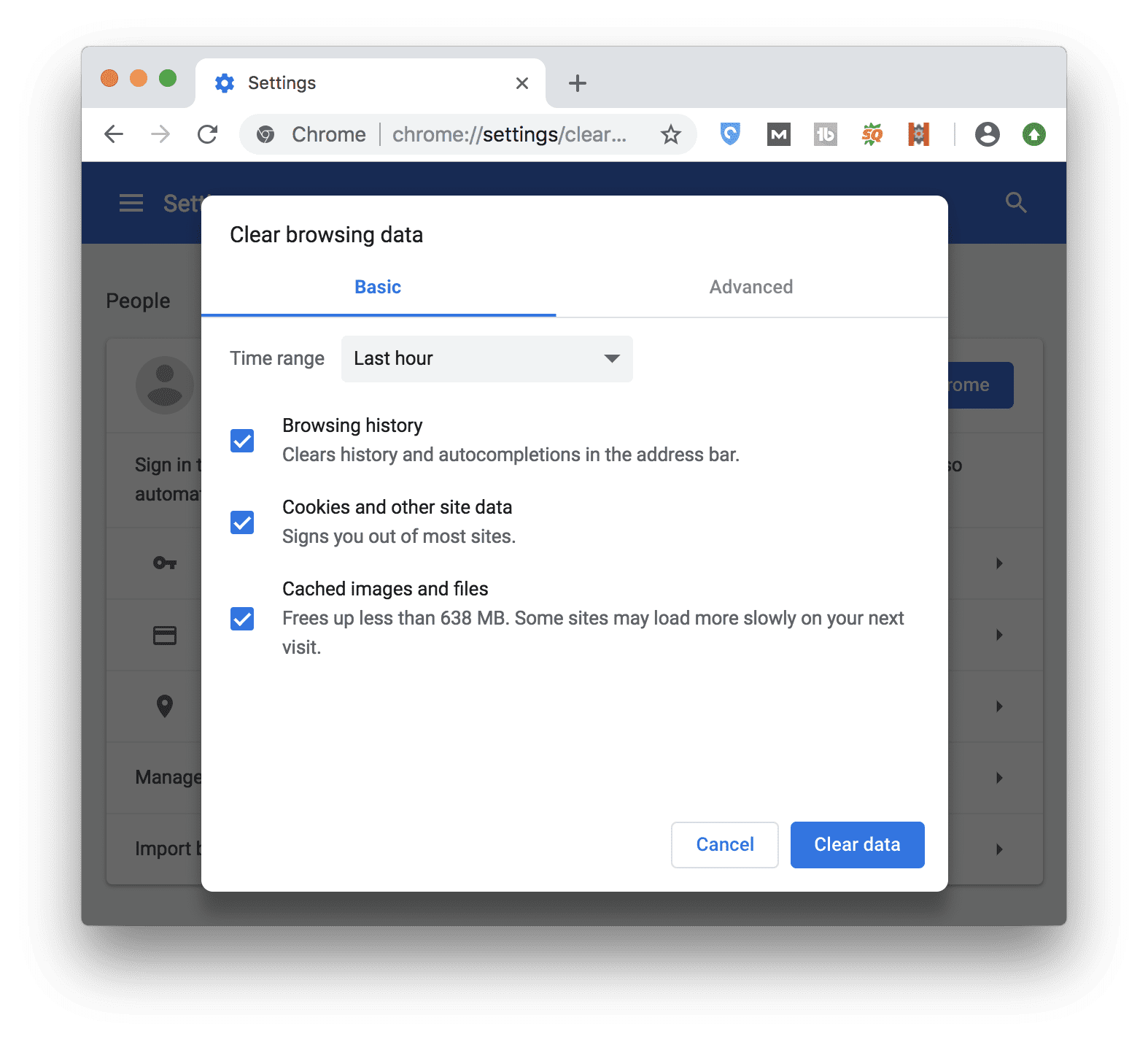- See Full List On Wikihow.com
- How To Remove Cached Memory In Mac
- How To Clear Cache Files On Mac | Nektony Blog
- How To Clear Cache On Mac - Complete Guide | Nektony
When you surf the Internet, your browser will create cache files for you. Here we only take the three frequently used browsers, as the example to show how to delete cache on Mac. How to clear browser cache on Mac Safari. Step 1: Open the Safari app on Mac. If you cannot find the Develop menu, go to the 'Safari' menu at upper left corner, head. MacFly Pro does the following: it removes inactive or old apps, as well as related files, cleans inactive memory, clears the cache and duplicates, gets rid of language and log files, and scans the overall condition to warn system of violations or threats. So over time, these cache files takes you storage space and will make it so slow that you won't be able to use the system. Cache files are both extremely necessary and utterly useless after a while, as they become a storage killer, dragging your Mac's performance to a laughable speed. Part #2: Delete App Cache Files Manually on Mac.
A lot of times we notice that there is very less space available on our disk. And those temporary files are one of the big issues for causing that. They occupy a lot of space on your device and also make it slow. Here is the question: how to delete temporary files on Mac? In this article, we'll show you 2 ways to get rid of them. Before we move on to the main topic, we'll explain some common questions for you to better understand the issue. But if you want to check the ways directly, just click Part 4 from the quick menu below.
What Are Temporary Files on Mac
Temporary files are created by an app or a program on your Mac to keep the data temporarily, basically there are 4 main types:
- Intermediate document versions
- Outdated system logs
- Browser cookies
- Application caches
Why Should I Remove Temporary Files on Mac
An overloaded hard drive can slow down your Mac. So, if you want your device to perform better, then you should remove the temporary files from your disk. To regularly clear the temporary files like cookies, browsers and cache, the performance of your Mac can be enhanced.
But it's worth mentioning that the temp files are created to enhance the function of a process or an application. So, if you have enough free space on your disk, it is probably better to keep the temporary files and let the macOS manage them for you, since the macOS has its own maintenance routines that work at particular times to remove the unnecessary temporary files.
Where Is the Temporary File Folder on Mac
It is not easy to find the Mac temporary files location. The Mac itself creates a directory in the /private/var/folder, which indicates that the temporary files' precise location will not be the same as anyone else's. Don't worry! You can still find the folder by follwing the steps below:
- Go to Finder, and find Terminal.
- Then open Applications and go to Utilities.
- Write echo $TMPDIR to display the temporary file folder name, or you can write open $TMPDIR to locate the folder in the Finder.
2 Ways on How to Remove Temp Files on Mac
As you can see, removing temporary files manually is really time and energy consuming. So here we highly recommend you to Use a Mac Cleaning Tool That Can Do Everything for You, since it's the most effective way which can save you a lot of time and avoid removing useful files when you manually remove temporary files.
- 1. Remove Temp Files Manually
1. Remove Temp Files Manually
1.1. Delete Temporary Files in Applications
- Exit all of the running apps.
- Go to “Finder” and pull down the “Go” menu.
- Open the “Library” by scrolling down.
- In “Library”, look for “Cache”.
- You will now see all the temp files and caches for every installed app on Mac.
- You can now select all of the cache files or caches of particular apps.
- Click right button of the mouse and choose “Move to trash”.
1.2. Delete Temporary Internet Files in Browsers
You can easily delete the temporary internet files in different browsers by following the steps below:
Delete Temporary Internet Files in Safari
- Open Safari from the menu bar.
- Choose “Preferences”.
- Choose the “Privacy” tab.
- Select “Remove All Website Data” and click on “Remove Now” to remove the temporary files.
Delete Temporary Internet Files in Chrome
- Open Google Chrome on your system and go to the Chrome menu.
- Go to “Tools” and choose “Clear Browsing Data”, you can also use the shortcut keys, Command+Delete+Shift.
- Choose the options you want and click on “Clear Browsing Data”.
Delete Temporary Internet Files in Firefox
- Open Firefox on your system and go to the Firefox menu.
- Choose “Preferences”.
- Go to the “Advanced” tab.
- Choose the “Network” sub-tab.
- Choose “Clear Now” in “Offline Web Content and User Data” or “Cached Web Content”.
1.3. Clear Temporary System Files on Mac
Softwares and apps from Mac system can also create temporary files and cache files. However, most of them should not be deleted manually, because it will lead to some unexpected issues on your Mac. Instead of manual deletion, you can turn to Umate Mac Cleaner for help. The app can safely remove those junk files in a flash without affecting other important ones. Equipped with updated safety database, the app will do the job perfectly.
1.4. Restart Your Mac
Temporary files will be automatically removed during a restart or shutdown cycle. So, this also brings another way to get rid of temp files - restart your Mac. With this way, you can safely delete some temporary files, cookies and caches. However, restarting your Mac is not that effective on deleting temp files, for it only available for few types of items.
2. Use a Mac Cleaning Tool That Can Do Everything for You
If you have been looking for the best software to delete temporary files on Mac, then you can use Umate Mac Cleaner. The app is very powerful that can remove temporary files within just a few seconds. So it is trusted by a lot of users all around the world and highly recommended by famous technology websites, like Cult of Mac, Macworld, techradar, etc.
As we mentioned above, the temp files on Mac includes document versions, system logs, app junk and browser cookies. Umate Mac Cleaner can help to delete all of these temp files through its two main features: Clean Up Junk & Erase Private Data. The app can automatically detect all of the unnecessary temporary files. Once the files are detected, you can easily delete them on Mac with a single click. Don't worry about the safety of this app. It is 100% reliable to use for its developer (iMyFone), which is a leading software company that focuses on developing utility products. Moreover, Umate Mac Cleaner allows you to clean up more than 40 types of junk files, not only for temporary ones. Next let's see how to use the app.
1. Download Umate Mac Cleaner and launch the app.
2. Select “Clean Up Junk” or “Erase Private Data” for scanning temp files that can be deleted from the system.
3. Select unnecessary things and delete them in 1 click.
Tips
Umate Mac Cleaner offers a free trial now, so you can test the tool first without paying a single penny.
Conclusion:
So you must know how to delete temp files in Mac now. Among the 2 ways offered above, the best method is to use Umate Mac Cleaner as it can scan, detect and remove all of the temporary files with a few clicks. You can download the free version of this app below to try it first.
Caches are files your Mac creates when you use an app or browse a website for the first time. It then uses those files to load things faster for you. But, if you don’t clear caches once in a while, those files start to pile up and can even cause application errors and crashes. In this post, we’ll tell you more about different types of caches on your Mac and explain how to remove them. Feel free to jump to the section that interests you the most:
What are the main cache types?
See Full List On Wikihow.com
There are roughly three main types of caches you can clean on your Mac:
- System cache
- User cache (including app cache and DNS cache)
- Browser cache.
This article will go over cleaning up all three.
How are cache files different from cookies?
You’ve probably heard and seen the term 'cache' used on your Mac, but do you know what it is?
Cache files are basically temporary data stored on your hard drive and used to speed up processes. For instance, Safari will download images on a webpage into the cache so that next time you visit the site, you don’t have to download the images again.
Cookie files are tiny members of the big cache family. Your browser collects this form of cache to remember previously visited websites. Cookies collect the details of your visit, its duration, actions on a page, etc. Advertisers also use these to follow you around the internet. However annoying they are, cookies are a part of internet reality that we cannot help but “Accept.”
There are many reasons to remove old cache from your MacBook, and disk space issue is only one of them. So what are the other benefits?
- Fixing issues with laggy web pages that load outdated content
- Removing personal data stored by websites and applications
- You need to force-delete outdated cache from an app
How is the cache created? An example from Photos

Every time you do image manipulations, like rotating a picture, its additional copy is created on your drive. In this manner, just 4 rotations are enough for image size to grow from 2.5 MB to 10 MB of disk space taken. If you edit photos and videos regularly, you may notice that your editor application also keeps temporary data — like an intermediate version of your files.
Are you ready to reclaim space on your Mac? Let’s go!
Can I delete all my cache files on a Mac?
It's not completely safe to delete all cache files at once. Your Mac caches what you’re doing in real-time, so if you’re using an app to work on some project, removing this app’s cache can erase all your progress. What you can remove is the inactive cache — the outdated files that often lie unused. Old app cache files fall into the same basket: if you've already deleted the app, no need to store its leftover cache — you can safely remove it from your Mac, and we'll tell you how to do it.
How to empty user cache on Mac?
Potential space reclaimed from junk - Up to 70%
As you can see, a single user cache folder on my computer takes up an enormous 2.05 GB of space. And that’s just one folder out of hundreds. That means a good cleaning could free up gigabytes of free space and speed up your Mac in the process.
Now, when it comes to clearing cache on Mac, there are two ways you can do it. You can clean them up manually step-by-step, or you can clean them in a second with a cleaning utility like CleanMyMac X. It removes temporary files, outdated cache, and app leftovers, freeing up space on your Mac. If you want to clear the cache on your Mac right now, we suggest doing it the easy way:
- Launch CleanMyMac X (download the trial version here).
- Select System Junk.
- Click Scan, and then Clean.
That’s it, all cache files cleaned! CleanMyMac X works on all systems, including the latest macOS version.
To clear your user cache manually, do the following:
- Open a Finder window and select “Go to Folder” in the Go menu.
- Type in
~/Library/Cachesand hit enter to proceed to this folder. - Optional step: You can highlight and copy everything to a different folder, just if something goes wrong.
- Go into each of the folders and clean out everything.
Note: We recommend that you remove the insides of these folders, but not the folders themselves.
Make sure that once you have finished clearing out these caches for additional hard drive space, you empty your Trash. To do this, Control-click on the Trash icon in the dock and select “Empty Trash.” Restart your Mac afterward so your Mac can begin to create new, fresh cache files. To help you make sense of your Library folder, here's a brief explanation of what each subfolder stands for.
4 main types of the cache within the Library folder
Caches
Temporary data created by apps and websites. Your apps keep generating cache files for as long as they are active. Relying on such pre-loaded content reduces memory load and speeds up data exchange.
Preferences
The Preferences folder is where you’ll find customized settings for your apps. Sometimes, there is a need to reset an app and delete its corrupted Preferences file. Preference files always end with .plist — so they are easy to spot and delete.
App support
App support folder contains large pieces of app data, like game saves. App support files may remain on your Mac long after you’ve deleted the app itself. That’s why “cleaners” for system junk were invented.
Containers
Containers folder is an exchange buffer that apps use to communicate with one another. This is often referred to as “sandboxing.” The Containers folder is automatically emptied after you restart your Mac.
How to delete system cache on Mac
Potential space reclaimed from junk - Up to 10% (manual methods) or 15% (using cleaner)
Next up, we’re looking at your system cache files. Those are generated by the built-in macOS system services. To see where your Mac stores system cache enter /Library/Caches in Finder’s Go menu.

The system cache files can be essential for correct system functioning. They also don’t take a lot of space — usually, it’s up to 2 GBs — so it’s one more reason not to touch them. On the contrary, the app cache can be safely removed. And we’ll tell you how.
How to delete app cache on Mac
Solbioembios driver download for windows 10. What is app cache? In short, it’s any media downloaded by the apps you use to work faster and not load it every time you open the app. Do you need it? It’s debatable, but the app cache takes up disk space and can be cleaned. Some apps may generate more cache than the others — those are often Spotify, Xcode, and Steam — but there’s a quick way to remove it.
You can delete the app cache on Mac in the same way as the user cache by going to ~/Library/Caches and removing the insides of the folders with the app name.
Proceed with caution! Not all app cache can be safely cleared. Some app developers keep important user info on cache folders. Backing up a folder before you delete is always a good idea. If everything works fine, then you can delete the backup later.
To be on the safe side, use CleanMyMac X; it works with a Safety Database and knows how to clear the app cache safely. As if that wasn’t enough, it will also remove more junk than manual methods. Download srl usb devices driver.

How to clear browser cache on Mac

Potential space reclaimed from junk - Up to 15%
We all love to surf the web, but every site we visit adds to the growing browser cache. Clearing your browser cache doesn’t just free up space; it will also clear your browsing history to secure your privacy.
Browser cache temporarily stores website data such as images, scripts, and other stuff, in order to make your browsing faster when you revisit the same site. If you’re worried about your privacy or want to hide pages you’ve visited, you can clear your Internet cache (or browser history). Also, resetting your browser cache will help eliminate 404, 502, and other errors caused by a corrupted cache.
Here’s a quick introduction to how to delete browser cache on Mac.
How to clear cache in Safari
Safari is a little trickier than the rest of the browsers. You could remove caches together with all the other website history through History — Clear History in the menu bar.
But if you need more precision, here’s how to empty cache on the Safari browser:
- In the top menu, choose Safari.
- Click Preferences.
- Choose the Advanced tab.
- Enable the Show Develop menu in the menu bar.
- Now go to Develop in the menu bar.
- Choose Empty caches.
Make sure you close/quit the browser and restart it after clearing the cache. Note that all your auto logins and predicted websites in the address bar will be cleared.
How To Remove Cached Memory In Mac
Manual methods remove most of the browser junk, but if you want to remove all of it from all your browsers at once, there’s a safer and faster method to clear your internet cache on any browser.
How to clear cache in Chrome
Here’s how to clear browser cache in Chrome manually:
- Enter
chrome://settingsin the search bar and press Return. - In the “Privacy and security” section, click “Clear browsing data.”
- Deselect all but 'Cached images and files.'
- Timewise, choose 'All time.'
- Hit the “Clear data” button.
How to clear cache in Firefox
Here’s how to delete cache in Firefox manually:
- Enter this command
about:preferencesinto the search bar. - Select the Privacy & Security panel.
- In the Cookies and Site Data, click Clear Data.
- Check Cached Web Content.
- Click Clear to confirm.
If, for some reason, you cannot open a web page, try putting cache: in front of the URL address. This redirects you to the site’s cached copy. For example cache:macpaw.com
It works most of the time and can magically open even the otherwise blocked sites.
The easy way to clear all browsing data
Instead of clicking between browsers and being limited to what they let you clean, take full control of all your browser cleaning with this simple method:
- Open CleanMyMac and select the Privacy module.
- Click on your browser of choice.
- Make your selections from the list of all your cache and privacy tracks.
- Click Remove to clean your browser.
How To Clear Cache Files On Mac | Nektony Blog
Cleaning your Mac has never been easier. Download CleanMyMac X and try for free to get yourself a faster, cleaner Mac — without worrying about removing the wrong thing.
And if you’re looking to clear just browser cookies, check out this easy one-minute explanation we’ve made for you.
Frequently asked questions
What are cache files?
How To Clear Cache On Mac - Complete Guide | Nektony
Cache files are basically scripts, images, temporary files, and other data left on your Mac after you visit a website or use an app for the first time. There are system cache, user cache, which includes app and DNS cache, and browser cache that accumulates as you surf the web.

Is it safe to remove cached data?
Cache helps websites and apps download faster for you. By deleting cache files, you basically remove the information the sites and apps know about you. And if your system needs this information, it will recreate the cache files. So there’s nothing dangerous about removing the user cache.
Where are the cache files stored on Mac?
The app and user cache files are usually located in ~/Library/Caches. Here, you can find folders dedicated to each app you have on your Mac. So, cache files of each application or program are stored in corresponding folders.
